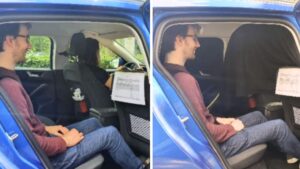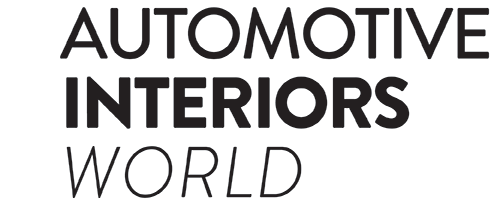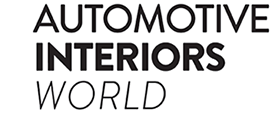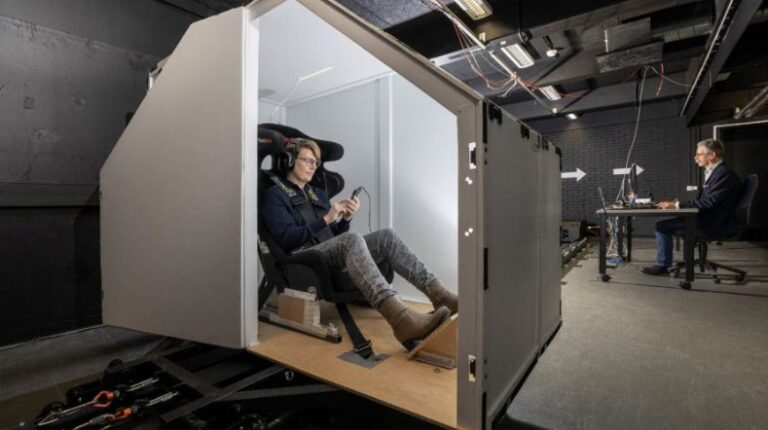Automated vehicles are rapidly moving from test tracks to public roads, transforming drivers into passengers. This shift puts more urgency on a centuries-old challenge: motion sickness. Research has shown that motion sickness could impact up to 60% of automated vehicle occupants. To address this growing concern, TNO brings together decades of expertise from multiple research domains under the Motion Comfort Institute.
Understanding motion sickness in modern mobility
Motion sickness occurs when there’s a mismatch between what your balance organs sense and what your eyes see. “Anytime that your body’s like, oh, something’s not right, my eyes aren’t agreeing with what my butt is feeling, you end up with the possibility of motion sickness,” explained Magnus Moore, business developer at TNO’s Motion Comfort Institute.
This issue takes on a new urgency with automated vehicles. TNO says that only 24% of drivers experience motion sickness compared to 62% of passengers, the reason being that drivers anticipate their own actions.
“The problem with automated vehicles is that the driver is going to become a passenger,” Moore noted. Electric vehicles compound this challenge with their high torque, creating unfamiliar, sharp accelerations.
“Motion sickness is the number one reason people don’t get on ships,” Moore explained. “If we don’t solve this, it could be the kind of thing that stops people using automated cars.”

TNO’s Motion Comfort Institute
The Motion Comfort Institute combines decades of defence research on human performance with cutting-edge automotive applications.
“We’ve got facilities which allow us to do fundamental research to understand what causes the problem, how can you detect it, and how can you solve it,” said Moore.
Research foundation: What causes, detects and solves motion sickness
TNO’s research strategy aims to address three questions. The first: what causes motion sickness? “A lot of the work we’ve been doing is defining which motions in your car are going to cause a problem,” explained Moore.
TNO uses the Desdemona simulator that serves as the centerpiece for understanding motion-induced discomfort. As the world’s only 6DOF centrifuge-based motion simulator, it can subject participants to any conceivable driving motion in controlled conditions.
Complementing Desdemona, a 40m linear track examines horizontal acceleration effects, critical for understanding car movements. Real-world validation is on a military test track and public roads between Soesterberg and Amersfoort, where researchers can test findings in actual driving conditions.
The second question TNO addresses is how to detect motion sickness. Future vehicles must recognize passenger discomfort. TNO researchers have developed the motion illness symptoms classification (MISC) scale for research settings.
“We’re only looking at options which are visual or thermal, but no contact,” Moore said. The research explores biomarkers, including heart rate variation, skin temperature changes and gaze patterns. All are measurable through cameras and sensors that are already being integrated into vehicles for safety monitoring.
The final question TNO confronts is how to prevent and solve it. The solutions that the company has presented span from immediate interventions to long-term vehicle design. This includes motion cueing, where seat vibrations or visual cues prepare passengers for upcoming movements; active suspension, with systems decoupling passenger experience from road irregularities; route optimization: AI-powered navigation selecting paths that minimize nausea-inducing movements; and adaptive driving modes: vehicle behavior that adjusts when detecting passenger discomfort.
“Within the next five years, we’re going to see automotive manufacturers actively designing their cars to reduce motion sickness,” Moore predicted.
Jaguar Land Rover pioneered software aimed at reducing motion sickness back in 2020



